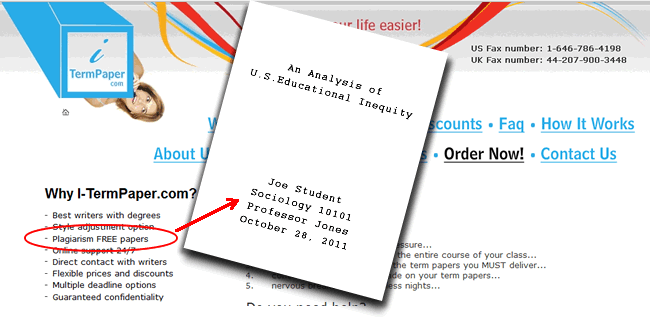Plagiarism as “Intellectual Theft”
- Plagiarism occurs when you present another person’s ideas, intentionally or unintentionally, as your own.
- In the MLA Style Manual and Guide to Scholarly Publishing, Joseph Gibaldi likens plagiarism to “intellectual theft,” because it “gives the impression that you wrote or thought something that you in fact borrowed from someone, and to do so is a violation of professional ethics” (165).
- It is your responsibility as the student to avoid plagiarizing.
- As a scholar, you are expected to credit the sources of ideas that you use in your own work.
Practice
Which of these statements is TRUE concerning plagiarism?
- It does not occur when a student purchases a paper from an online source
- It is not considered theft or akin to stealing
- It is the responsibility of the student to avoid plagiarism
- It does not occur when a student turns in a paper from another class for a new assignment.
What Counts as Plagiarism?
Plagiarism can be intentional or unintentional. It often occurs because the process of citation can be confusing, technology makes copy + paste so easy, and knowing exactly what to cite is not always easy! You can avoid unintentional plagiarism by learning how to cite material and keeping track of sources in your notes. Give yourself plenty of time to process sources so you don’t plagiarize by mistake. Here are some examples of plagiarism:
- Submitting a paper written by someone else.
- Using words and phrases from the source text and patching them together in new sentences.
- Failing to acknowledge the sources of words or information.
- Not providing quotation marks around a direct quotation. This leads to the false assumption that the words are your own.
- Borrowing the idea or opinion of someone else without giving the person credit
- Restating or paraphrasing a passage without citing the original author
- Borrowing facts or statistics that are not common knowledge without proper acknowledgement
Why You Should Care
Being honest and maintaining integrity in your academic work is a sign of character and professionalism. In addition to maximizing your own learning and taking ownership of your academic success, not plagiarizing is important because
- your professors assign research projects to help you learn. You cheat yourself when you substitute someone else’s work for your own.
- you don’t like it when someone else takes credit for your ideas, so don’t do it to someone else.
- plagiarizing comes with consequences. Depending on the offense and the institution, you may be asked to rewrite plagiarized work, receive a failing grade on the assignment, fail the entire course, or be suspended from the university.
- professors use search engines, databases, and specialized software to check suspicious work, so you will eventually get caught.
Is This Plagiarism?
 1. Is the paper above plagiarized?
1. Is the paper above plagiarized?
- No, it’s an original paper, guaranteed plagiarism-free.
- Yes, because Joe Student purchased a paper and handed it in as his own work.

2. Is the passage above plagiarized?
- No, it’s not plagiarism. Joe Student did not copy the text word for word. Besides, Amazon is not a “real” author.
- Yes, this is plagiarism because Joe Student used someone else’s ideas and words without giving them credit.

3. Does the student paper above plagiarize?
- No, it’s not plagiarism. Credit to the source is given in both the text and the list of references.
- Yes, this is plagiarism. Joe Student did not use quotation marks.